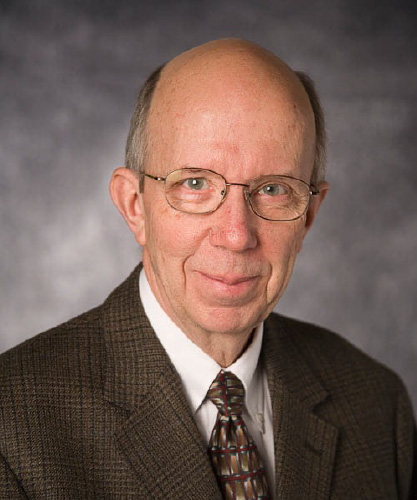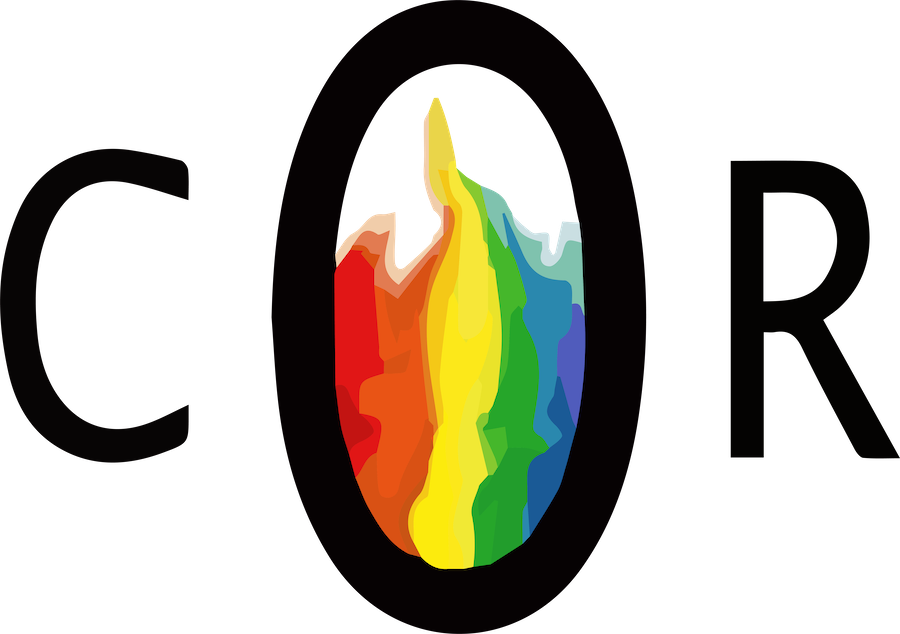
Douglas S. Kerr
October 29, 1936 – April 2, 2025
A memorial service will be held on July 26 at the Church of the Redeemer, 2420 S. Taylor Road, Cleveland Heights, Ohio 44118 at 10 a.m.
“That they may have life and have it abundantly.”
This inscription drawn from biblical passage John 10:10 adorns the Main Gate of the American University of Beirut (AUB). Douglas S. Kerr (10/29/1936 – 4/2/2025) lived abundantly and dedicated his life so others could do so too. He was born in the AUB hospital in Beirut, Lebanon to Elsa Reckman Kerr, who served as the University’s Dean of Women Students, and Stanley E. Kerr, who chaired the Department of Biochemistry. World War II had a significant impact on Douglas’ childhood.
With the German troops advancing towards Lebanon, his family was uprooted from their home in Beirut. His older sister, Marion (Miller), escaped on the last passenger ship to safely cross the Mediterranean. Douglas, his parents, and his siblings Dorothy (Jessup), and Malcolm, fled to Ramallah and then Cairo. They remained in Cairo as his brother recovered from pneumonia and typhoid, and Douglas remembered spending their evenings in air raid shelters as the Italians bombed the city. When Malcolm was well enough to travel, the family made their way to the Suez Canal in hopes of finding transport to Australia. While the harbor was littered with the wreckage of bombed ships, they were ferried to a massive vessel anchored in the Gulf of Suez – the Queen Elizabeth, which was transporting troops, wounded soldiers, and prisoners of war. Doug and his family were the first commercial passengers on the Queen Elizabeth. From Australia they took another ship through the Pacific to Hawaii. The family settled in Princeton, NJ. Stanley left the family suddenly to return to the Middle East and AUB for the duration of the war.
Douglas remembered learning about the bombing of Hiroshima and Nagasaki while in his third-grade classroom. His family returned to Lebanon following the war. He took a keen interest in his father’s work, spent time in his lab, and learned how to make nitroglycerin and alcohol. Doug attended American Community School (ACS) on the AUB campus. He remembers plotting with a group of friends to shoot home-made rockets at the dormitory that housed the students that boarded at ACS. Every one of the boys were brought into the principal’s office. The principal went down the line and each boy denied involvement, until he reached Douglas, who admitted guilt. The last boy in line admitted guilt in solidarity, and the two were punished. Douglas at an early age demonstrated a strong conscience and an emerging scientific talent.
Douglas recalled witnessing the US naval ships in Beirut’s harbor as a teenager. He wrote an essay at ACS, “Why the US Should Prepare for War,” and was eager to join the military. In 10th grade, however, he left Beirut and attended Westtown School in Westtown, PA, which was a co-ed Quaker school. He was inspired by the Quaker belief that “there is that of God in every person,” learned to appreciate the value of silent meditation, and embraced the obligation to speak truth to power. In his freshman year at Haverford College, he became a pacifist and after a great moral struggle, a conscious objector. He majored in English and minored in biochemistry.
After meeting with Bayard Rustin at Haverford, Douglas traveled to the South in 1957 with two classmates, met Martin Luther King Sr. at Ebenezer Baptist Church, and visited a Christian, pacifist, interracial community in Georgia – Koinonia Farms. Segregationists had attacked the community with boycotts, gun fire, and bombings, and Douglas stood vigil at the community’s entrance through the evenings of his visit. The members told the Haverford delegation that they remained steadfast and risked their lives because they felt “there were basic principles at stake, which we cannot forsake at any cost. The current attack on Koinonia is an attack on the most sacred principles of American democracy.” The farm survived the onslaught and continues its work to this day.
After graduating, Douglas entered Western Reserve University’s medical school. He took advantage of a program sponsored by the National Institutes of Health and entered a seven-year MD-PhD program. He became a lifelong proponent of bridging the divide between scientific research and clinical practice. While completing his final year of his program, he met Mary Ann DuMond, a clinical social worker, who he married in June 1965 one week before he graduated. They were married 59 years, supporting and caring for one another with deep affection and love. They had two children, Laura and Daniel.
The two moved to Baltimore, where Douglas began his pediatric internship and residency at Johns Hopkins Hospital. As a conscientious objector, during the Vietnam War he served in the US Public Health Service, Laboratory of Biochemistry, at the National Heart Institute for two years. He completed his residency at Johns Hopkins and had further developed his interest in metabolic research.
Douglas received a fellowship to study fasting metabolism in malnourished children at the Tropical Metabolism Research Unit (TMRU) at the University of West Indies in Kingston, Jamaica, where he brought his family from 1970-1973. The collaborative work he and his colleagues did at TMRU laid the foundation for effective treatment of malnutrition as the standards of care they developed were adopted by the World Health Organization.
In late 1973, he accepted a position as an Assistant Professor of Pediatrics and Biochemistry at Case Western Reserve University and Associate Pediatrician at University Hospitals. He worked alongside Dr. Ruth Owens, who he credited for training him on the job in the field of endocrinology. Together they founded the Division of Pediatric Endocrinology and Metabolism at Rainbow Babies and Children’s Hospital. He served as the division chief from 1975-1989.
Douglas specialized in the study of inherited disorders of energy metabolism, especially on disorders of pyruvate metabolism. With his colleagues Arthur Zinn and Charles Hoppel, in 1986 he published the first description of fumarase deficiency, a Krebs Cycle defect in the pathway for energy metabolism. He was a co-investigator on the multi-center Diabetes Control and Complications Trial, a landmark study from 1983-1993, which transformed standards of care for diabetes. He was the founding director of the Center for Inherited Disorders of Energy Metabolism laboratory (CIDEM). CIDEM became one of the major North American referral centers for the diagnosis of mitochondrial diseases and other disorders of energy metabolism.
Douglas served as President of the Society for Inherited Metabolic Disorders in 1994, on the Board of Trustees for the Diabetes Association of Cleveland, and as the chair of the Ohio Department of Health’s Newborn Screening Committee. Under his direction, Ohio expanded its screening of disorders from five to twenty-eight, and he earned bipartisan recognition from the Ohio House of Representatives as one of “Ohio’s finest citizens.” He was awarded the Lifetime Achievement Award from the Diabetes Association of Greater Cleveland.
He took great pride in being honored with the Gender Equity Award from the American Medical Women’s Association. His mother’s work at AUB influenced his deep appreciation of women’s professional contributions. Douglas supported Mary Ann as she pursued her clinical social work career, and he collaborated closely with Dr. Ruth Owens as together they made University Hospitals a nationally recognized center for pediatric endocrinology and metabolism.
He saw his professional work as a pediatrician and scientist and his life-long commitment to peace and non-violence as interconnected. He became an active member and president of the Northeast Ohio chapter of Physicians for Social Responsibility, which sought to address the epidemic of gun violence. This work had a deep personal significance, since his brother Malcolm had been murdered by a firearm while serving as president of AUB in 1984. He was a member of the local chapter of the National Committee for a Sane Nuclear Policy (SANE), which had been founded by pacifists in 1957. In 1993 SANE became Peace Action, which he continued to be an active member of until 2022.
Given his childhood background and his parents’ humanitarian work for Near East Relief after World War I, Douglas was especially committed to supporting non-violent efforts to promote peace in the Middle East. He worked tirelessly with organizations in the United States, such as Churches for Middle East Peace, Jewish Voices for Peace, and Interfaith Peace Builders, which became Eyewitness Palestine. Douglas and Mary Ann joined several delegations to Palestine and Israel to meet with dedicated peace activists. They further traveled on their own through the region to expand their understanding of the Palestinian/Israeli conflict. They worked together to bring many of the inspirational peace makers from Palestine to Ohio for speaking tours.
From 1975 through his death, Douglas found a spiritual home in a small church in Cleveland Heights, Church of the Redeemer. He was drawn to the church’s openness and willingness to welcome all. The church was one of the few racially integrated houses of worship, and it became a global leader in welcoming LGBTQ+ parishioners.
Through his final years, Douglas persevered through progressive frontal temporal lobe dementia and was lovingly supported by Mary Ann until he died on April 2, 2025. He is survived by his sister Dorothy Jessup, his wife Mary Ann, his children Laura (Diana Trujillo) and Daniel (Tatiana Belenkaya), and his granddaughter Elsa. Throughout his life, Douglas modeled how to live one’s life with a moral center, to sustain a commitment to the ongoing work towards social justice and peace, to embrace diversity, to inspire intellectual curiosity, and to strive for a deep molecular understanding of the world in all its complexity. He drew inspiration from Micah 6:8: “What does the Lord ask of you, but to do justice, to love kindness, and to walk humbly with your God.”
A memorial service will be held on July 26th at the Church of the Redeemer, 2420 S. Taylor Rd., Cleveland Heights, Ohio 44118 at 10 am. A reception will follow at Judson Manor, 1890 E. 107th St., Cleveland, Ohio 44106 at noon. In lieu of gifts, donations in his name can be made to Eyewitness Palestine, PO Box 2090, Springfield MA 01101, the American Civil Liberties Union of Ohio, 4506 Chester Avenue, Cleveland, OH 44103, or The Church of the Redeemer, 2420 South Taylor Road, Cleveland Heights, OH, 44118.
Written by: Daniel R. Kerr
